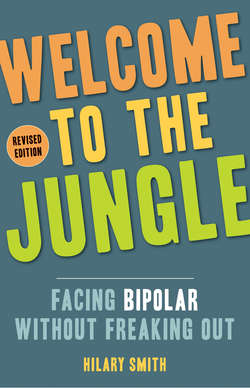Читать книгу Welcome to the Jungle, Revised Edition - Hilary T. Smith - Страница 7
INTRODUCTION TO THE 2017 EDITION
ОглавлениеWhen my publisher contacted me about doing a second edition of this book, I felt a little bit like a punk musician being asked to go on a promotional tour for a rerelease of an album she'd recorded when she was still playing reggae at bar mitzvahs: “I can't put on those old clothes and go sing those old songs—I'm a different person now! It would be a lie—a reggae-flavored act of deception!” But the more I thought about it, the more I came around to the idea. What if I didn't have to wear a dreadlock wig and play the same four chords on my old synthesizer? What if I could play the tour as myself—a wizened thirty-year old with slightly different insights and ideas than the fresh-faced youth I was back then? What if, rather than pretending the intervening seven years hadn't happened, I used my experiences and insights to make the original act way better than it had been before?
That's when I started to get really excited.
I wrote the first edition of Welcome to the Jungle when I was twenty-three. At the time, I was less than two years out of college, living with roommates and just starting out as a writer. Bipolar was very much at the forefront of my mind, since I had only been diagnosed a few years before. My imagination was completely enchanted by the idea of being mentally ill—a status that seemed both crippling and darkly glamorous (all my favorite writers and musicians were manic-depressive; now I was in the club, and I had to admit it felt a little bit cool.)
Since then, my thinking on what we call mental illness has evolved quite a bit. I have had a lot more time to observe myself; to see for myself whether my own lived experience matched up with the bipolar prophecy read out by the doctor (“Thou shalt have manic episodes and depressive episodes of ever-increasing intensity! Thou shalt never live another day without meds!”) and to realize the many ways in which it very strongly diverges. It has been a priority for me in this revised edition to emphasize the many, many paths that people diagnosed with mental illness can take in life. Every person is different, and this is just as true for people with a mental illness diagnosis as for people without.
Over the years, I've also grown more and more uncomfortable with the way our medical system pathologizes human experience. Not all weeping is depression; not all dancing is mania—yet if you take the Diagnostic and Statistical Manual of Mental Disorders too seriously, you just might start to believe that, relegating all sorts of important and meaningful aspects of life to the category of “I'm just bipolar and need my meds adjusted.” To tell you the truth, it's been years since I've even thought of myself as being “bipolar.” I am not “bipolar”; I am human. (Does that disqualify me from writing this book? Or am I more qualified than before? I hope you will agree that it is the latter.)
With that in mind, this new edition has a greater focus on the human, not the diagnosis: the ways in which each person can find his or her own way through the extreme emotional states and intense experiences that we are calling “bipolar”—whether that means medication or meditation, psychiatrists or vision quests, good sleep or good all-night dancing, or a little bit of everything.
Sincerely, Hilary
